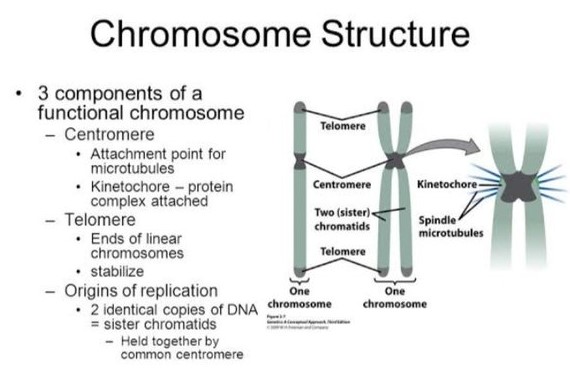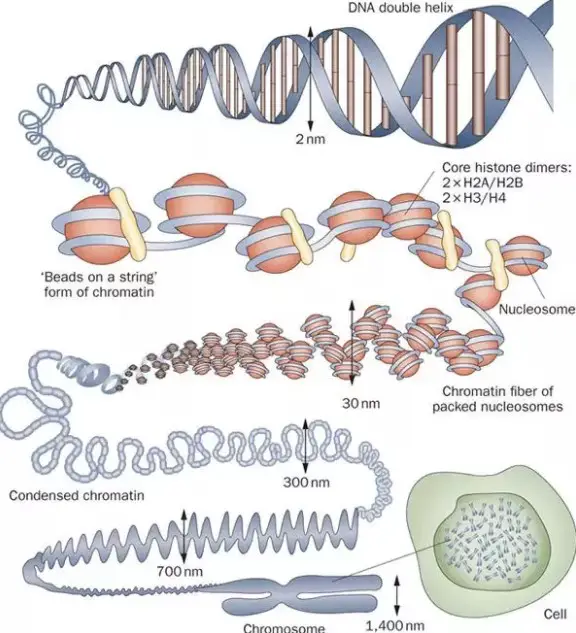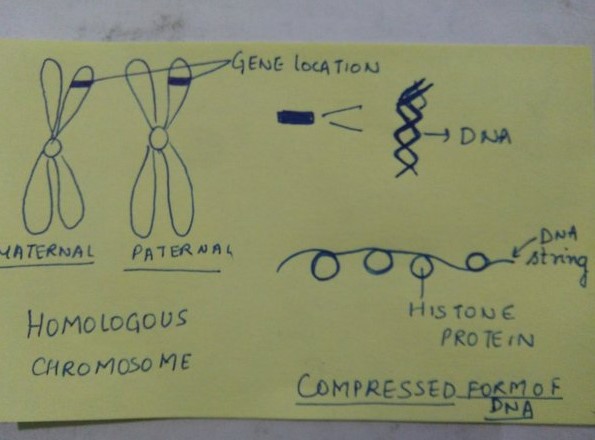At the heart of our genetic blueprint lies an intricate relationship between chromosomes and DNA, elements fundamental to the biology of life. This connection underpins not just our understanding of genetics but also the mechanisms through which traits are inherited and how species evolve over time. Chromosomes and DNA together construct the library of life, encoding the instructions necessary for the development, functioning, and reproduction of organisms.
The relationship between chromosomes and DNA is pivotal; chromosomes are structures within the cell that organize and protect DNA strands. DNA, in turn, is composed of genes, which are the basic units of heredity. Genes carry the instructions for making proteins, which play critical roles in bodily functions. Essentially, chromosomes serve as the storage units for DNA, ensuring its proper segregation during cell division and maintaining the integrity of genetic information.
Diving deeper into the subject reveals that chromosomes are made up of DNA wrapped around proteins called histones, forming a compact and organized structure that facilitates efficient gene expression and regulation. This organization is crucial for the stability of genetic information and its accurate transmission through generations. Understanding this relationship not only enlightens us about our own biology but also opens doors to advancements in genetic research, medical treatments, and biotechnological innovations.

Chromosomes Explained
Definition and Characteristics
Chromosomes are long, thread-like structures made of DNA and proteins. They are found in the nucleus of most living cells and hold genetic information. Each chromosome is made up of DNA tightly coiled many times around proteins called histones. This compact structure helps to fit the long DNA molecules into the cell nucleus.
Role in Genetics
Chromosomes play a crucial role in genetics as they carry genes, the basic units of heredity. Genes within chromosomes are instructions for making proteins, which are essential for the body’s structure, function, and regulation. The distribution of chromosomes during cell division is fundamental to genetic inheritance.
Structure and Composition
Chromosomes consist of a DNA double helix wound around histone proteins. This combination forms a substance called chromatin. During cell division, chromatin condenses to form visible chromosomes. Each chromosome has a centromere, which is the point where it is attached to its sister chromatid (an identical chromosome copy) during early stages of cell division.
Types of Chromosomes
Autosomes vs. Sex Chromosomes
- Autosomes are chromosomes that do not determine sex. Humans have 22 pairs of autosomes.
- Sex chromosomes determine an individual’s sex. Humans have one pair, either XX (female) or XY (male).
Number in Humans and Other Species
- Humans have 46 chromosomes, including 22 pairs of autosomes and one pair of sex chromosomes.
- Different species have different numbers of chromosomes. For example, fruit flies have 8, while dogs have 78.
DNA Unraveled
Definition and Significance
DNA, or deoxyribonucleic acid, is the hereditary material in humans and almost all other organisms. Nearly every cell in a person’s body has the same DNA. Its main role is to store information needed to build and maintain an organism—like a blueprint for growth, development, functioning, and reproduction.
Structure of DNA
The structure of DNA is a double helix, formed by two long strands of nucleotides twisted around each other. Each strand consists of a backbone made of sugar and phosphate groups, with nitrogenous bases sticking out. The bases pair specifically (A with T, and C with G) across the two strands, forming the steps of the helix.
The Concept of Genes
A gene is a length of DNA that codes for a specific protein. Genes are the basic physical and functional units of heredity. They are arranged in a linear sequence on chromosomes and determine everything from hair color to susceptibility to certain diseases.
DNA Functionality
Replication Process
DNA replication is the process by which DNA makes a copy of itself during cell division. The steps include:
- Unwinding of the double helix.
- Separating the two strands by breaking the hydrogen bonds between the bases.
- Copying each strand using DNA polymerase enzymes to add complementary nucleotides.
Protein Synthesis
Protein synthesis involves transcription (copying part of the DNA sequence into RNA) and translation (turning the RNA sequence into a protein). This process is vital for cell growth, repair, and replication.
Mutation and Genetic Variation
Mutations are changes in the DNA sequence. They can lead to genetic variation among individuals, which is a source of evolutionary change. While some mutations can be harmful, others may have no effect or can even be beneficial.
Interconnection of Chromosomes and DNA
Chromosomes as DNA Packaging
Chromosomes serve as the packaging system for DNA. This packaging is crucial for fitting the long DNA molecules into the cell nucleus, ensuring proper segregation during cell division, and regulating gene expression and DNA replication.
The Role of Histones
Histones are proteins around which DNA winds, forming a structure known as a nucleosome. This arrangement helps in the organization and compaction of DNA, playing a key role in gene regulation.
Gene Location and Chromosomes
Genes are located on chromosomes. Each chromosome carries hundreds to thousands of genes. The specific location of a gene on a chromosome is known as its locus. Gene location is crucial for understanding genetics and disease.
Genetic Information Storage
Chromosomal Arrangement of Genes
The arrangement of genes on chromosomes is linear and specific to each chromosome. This arrangement affects gene expression, genetic linkage, and the likelihood of genetic recombination.
DNA’s Role in Information Coding
DNA codes for all genetic information. The sequence of its bases (adenine, thymine, cytosine, and guanine) determines the information available for building and maintaining an organism, similar to the way letters of the alphabet appear in a certain order to form words and sentences.

Chromosomal Aberrations and DNA
Types of Chromosomal Abnormalities
Chromosomal abnormalities can occur in different forms, including deletions, duplications, inversions, translocations, and aneuploidies. These terms describe the loss, gain, rearrangement, or abnormal number of chromosomes, respectively. Each type affects the genetic information in unique ways, potentially leading to developmental issues or diseases.
Impact on Genetic Information and Health
The impact of chromosomal abnormalities on health can be profound. They may disrupt the normal functioning of genes, leading to various health issues and developmental disorders. Conditions such as Down syndrome, Turner syndrome, and Klinefelter syndrome are directly linked to chromosomal abnormalities, affecting physical and cognitive development.
Examples of Related Conditions
- Down Syndrome: Caused by an extra copy of chromosome 21 (trisomy 21).
- Turner Syndrome: Results from a missing or partially missing X chromosome in females.
- Klinefelter Syndrome: Occurs in males with an extra X chromosome (XXY).
DNA Mutations and Chromosomal Effects
Relationship Between DNA Mutations and Chromosomal Changes
DNA mutations can lead to chromosomal changes in several ways. For example, a mutation that affects the structure of a chromosome can result in an abnormal arrangement of genetic material. Likewise, mutations in genes responsible for chromosome separation during cell division can cause aneuploidy, a condition where cells have an abnormal number of chromosomes.
Influence on Genetic Diseases and Traits
The influence of DNA mutations and chromosomal changes on genetic diseases and traits is significant. Mutations can be harmful, beneficial, or neutral, depending on their nature and context. Genetic diseases often arise from mutations that impair normal gene function, while some genetic traits, such as resistance to certain diseases, may result from beneficial mutations.
Scientific Discoveries and Advancements
Historical Perspective on Chromosome and DNA Research
The field of genetics has seen remarkable progress since the discovery of DNA as the material of heredity in the mid-20th century. Key milestones include the identification of the double helix structure of DNA by Watson and Crick and the Human Genome Project, which mapped all the genes in the human genome.
Recent Breakthroughs in Genetics
Recent advancements include the development of CRISPR-Cas9 gene-editing technology, which allows for precise modifications to the DNA sequence. This has opened new possibilities for treating genetic disorders. Additionally, advances in genomic sequencing have made it cheaper and faster, enabling personalized medicine.
Future Implications for Medicine and Biology
The future of medicine and biology is deeply intertwined with genetic research. The ability to edit genes promises to revolutionize treatments for genetic disorders. Further, understanding genetic variations will advance personalized medicine, allowing treatments tailored to individual genetic profiles.
Practical Applications
Genetic Testing and Diagnosis
Genetic testing has become an invaluable tool in diagnosing genetic conditions, carrier screening, and prenatal testing. Techniques such as PCR, microarrays, and next-generation sequencing enable the detection of mutations and chromosomal abnormalities with high precision.
Gene Therapy and Medical Treatments
Gene therapy aims to treat or prevent disease by modifying the genetic material within a patient’s cells. Successful gene therapies have been developed for several diseases, including immunodeficiencies, hemophilia, and certain types of cancer.
Forensic Science and Ancestry
DNA analysis has revolutionized forensic science, providing a powerful tool for identifying individuals in criminal investigations and solving cold cases. Similarly, DNA testing for ancestry provides insights into one’s ethnic background and genealogical lineage.
Ethical Considerations
Genetic Privacy and Discrimination
The rise of genetic testing and data poses significant questions about privacy and the potential for genetic discrimination. Concerns include the misuse of genetic information by employers, insurance companies, and others, leading to a need for robust legal protections.
Gene Editing Technologies
Gene editing technologies like CRISPR-Cas9 offer immense therapeutic potential but also raise ethical questions. Issues include the possibility of unintended consequences, the ethics of germline editing (which would affect future generations), and the risk of creating a socio-economic divide based on genetic enhancement.
Impact on Society and Future Generations
The advancements in genetics and biotechnology are set to have a profound impact on society. They hold the promise of eradicating genetic diseases and improving human health and longevity. However, ethical, legal, and social implications must be carefully navigated to ensure these technologies benefit all of humanity without exacerbating inequalities or infringing on personal freedoms.
Frequently Asked Questions
How many chromosomes do humans have?
Humans have 46 chromosomes, arranged in 23 pairs. This includes 22 pairs of autosomes and one pair of sex chromosomes, which determine an individual’s sex. Each chromosome is a long DNA molecule that carries genetic information vital for development, growth, and health.
What is the role of DNA in genetics?
DNA holds the genetic instructions necessary for the development, functioning, survival, and reproduction of all known living organisms and many viruses. It contains the biological instructions that make each species unique. DNA’s role in genetics is to store, transmit, and express the genetic information encoded within its sequence of nucleotide bases.
How do chromosomes and DNA relate to genetic diseases?
Chromosomes and DNA are central to the understanding of genetic diseases. Aberrations in chromosome structure or number, as well as mutations in the DNA sequence, can lead to various genetic disorders. These changes can disrupt the normal function of genes, leading to diseases that are inherited or develop during a person’s life.
Can changes in DNA affect chromosomes?
Yes, changes in the DNA sequence, known as mutations, can affect the structure and number of chromosomes. These mutations can cause chromosomal abnormalities by disrupting the normal arrangement of genetic material, leading to various health conditions and affecting an individual’s overall genetic makeup.
Conclusion
The intricate relationship between chromosomes and DNA is foundational to our understanding of biology and genetics. Through this lens, we can appreciate the complexity of life, from the microscopic processes that occur within each cell to the diversity of species that populate our planet. It underscores the remarkable precision and adaptability of biological systems, where even the smallest change can have far-reaching implications.
As we continue to unravel the mysteries of chromosomes and DNA, we stand on the brink of incredible discoveries that promise to transform medicine, agriculture, and biotechnology. The insights gained from studying this fundamental relationship will undoubtedly continue to shape our understanding of life and guide the future of genetic research, offering new hope for treating genetic diseases and enhancing our quality of life.

